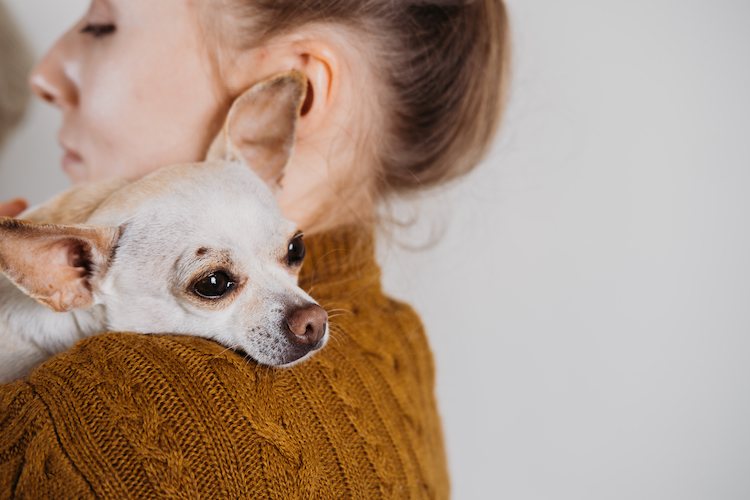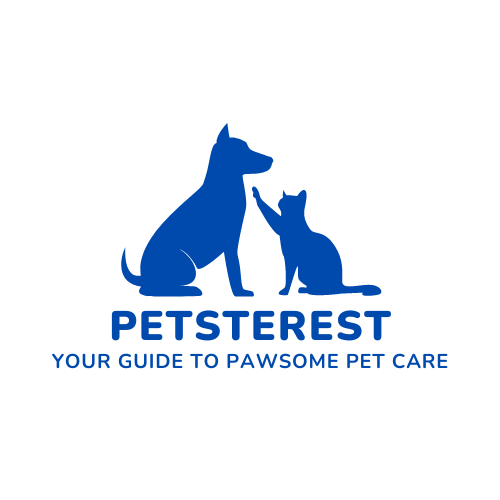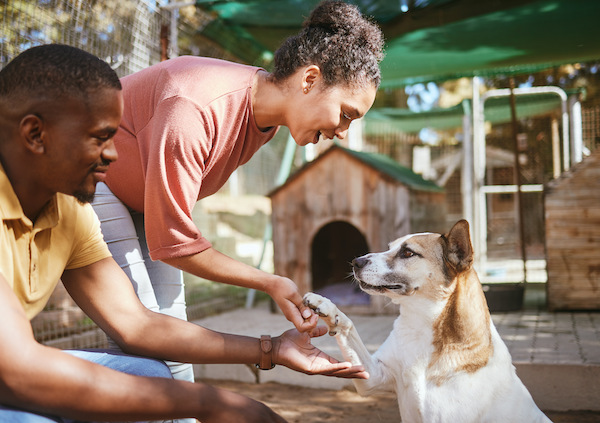Pet Adoption Process
The pet adoption process is an important journey for those looking to bring a furry companion into their lives. With numerous benefits for both animals and their new families, it’s essential to understand the steps involved in adopting a pet from shelters or rescue organizations:
- Research: Begin by exploring different breeds, learning about their needs, and determining the right fit for your family.
- Locate Animal Shelters or Rescue Groups: Use resources like Petfinder to find local animal welfare organizations that have pets up for adoption.
- Visit the Shelter or Rescue Group: Spend time interacting with available pets and ask questions about their personality, history, and specific needs.
- Complete an Adoption Application: Provide information about your home, family members, lifestyle, and experience with pets to help shelter staff assess if you’re a suitable candidate.
- Home Visit/Family Fit Check: Some shelters may require a visit to your home to assess its suitability for the selected pet before finalizing the adoption process.
- Paying Adoption Fees: Adoption fees cover expenses like spaying/neutering, vaccinations, microchip registration, and other medical care administered during the pet’s stay at the shelter.
- Prepare Your Home: Set up living spaces with beds, toys, food bowls, litter box (for cats), etc., ensuring your new furry friend will have everything they need upon arrival.
- Bringing Your New Pet Home: Allow ample time for your new companion to adjust gradually by giving them space while also offering plenty of love and patience as they acclimate themselves to their new environment.
- Ongoing Support/Resources: Get assistance from shelter staff or rescue group volunteers with any questions or concerns during the initial adjustment period; consider enrolling in obedience classes or seeking out support groups of fellow adopters.
- Monitor Health and Wellness Regularly: Schedule regular veterinary check-ups to ensure your adopted pet stays healthy throughout their life.
By following these steps, you’ll be providing a loving home for a furry friend in need and gaining a loyal companion. Remember to keep researching, ask questions, and consider adoption as the best option when finding the perfect pet for your family.
Shelter And Rescue Organizations
Shelter and rescue organizations play a crucial role in the world of pet adoption, providing a safe haven for homeless pets while they wait for their forever homes. These compassionate institutions not only house companion animals but also offer comprehensive care, including vaccinations, spaying/neutering services, and medical attention when needed.

There are various types of shelter and rescue organizations available to meet different needs. For instance, some focus on specific breeds or sizes of animals – so if you have your heart set on a particular type of furry friend like an Italian Greyhound or an English Mastiff, breed-specific rescues can be your go-to source.
In addition to this specialized approach, there are general shelters that cater to all manner of pets in need.
One inspiring example is “Angels Among Us Pet Rescue,” which operates out of Georgia with the mission “to save as many dogs and cats from high-kill shelters.” Through hard work by staff members and volunteers alike – including numerous foster families who open their homes temporarily while permanent arrangements are found – this organization has helped thousands find loving companionship through adoptions since its inception in 2009.
Breed-Specific Rescues
Breed-specific rescues offer a fantastic opportunity for potential pet parents seeking to adopt their ideal furry companion. These organizations specialize in rescuing particular dog breeds, such as Labrador retrievers, golden retrievers, or German shepherds.
One excellent example of breed-specific rescues working together with others is the collaboration between over 77% of AKC National Breed Clubs and non-AKC affiliated rescue organizations to transport, foster, and adopt-out dogs in need.
Pet parents looking to add a purebred dog to their family should consider exploring breed-specific rescues as an alternative to traditional adoption centers or animal shelters.
Not only will they have access to beautiful furry companions that are well-cared for by volunteers who understand their needs but they’ll also be contributing towards responsible pet ownership by adopting pets with fewer options available through mainstream channels like shelters.
Adoption Success Stories
There are countless heartwarming stories of individuals and families choosing to adopt pets from shelters and rescue organizations, providing them forever homes with love and care.
These tales not only showcase the powerful bonds that can be formed between humans and their furry friends but also serve as an inspiration for those considering adoption.
For instance, Joyful Rescues in Rochester, NY is dedicated to finding forever homes for all small furry animals available for adoption. By sharing success stories on their website, potential adopters gain insight into how adopting a homeless animal can enrich both the lives of the pet and its new family members.

These adoption success stories serve as a testament to the positive impact responsible pet ownership brings about when opting for rescue over purchase. The North Shore Animal League America – the world’s largest no-kill animal rescue organization – strives towards this goal as well by rehoming homeless pets including kittens, puppies, and purebred animals through local adoptions nationwide.
Fostering Pets
Fostering pets is a fulfilling way to provide temporary care for animals in need and help them find their forever homes. Animal shelters often rely on foster homes to take care of young or sickly animals who require more attention than they can receive in a shelter environment.

Fostering also helps reduce overpopulation in animal shelters by freeing up space for other homeless pets. Shelters are often overcrowded places where animals can be at risk of euthanasia due to lack of space or resources.
In addition to making a difference in the life of an animal, becoming a foster parent allows you the opportunity to learn about different breeds and personalities while giving back to your community.
Responsible Pet Ownership
Owning a pet can be a wonderful experience, but it is also a big responsibility. Here are some important things to keep in mind when it comes to responsible pet ownership:
- Regular vet visits: Just like humans, pets need regular check-ups with the veterinarian to ensure they are healthy and up-to-date on vaccinations.
- Proper nutrition: Feeding your pet a balanced diet that meets their specific nutritional needs is essential for maintaining good health.
- Exercise and mental stimulation: Pets need exercise to stay physically healthy and mental stimulation to prevent boredom and behavioral issues.
- Training and socialization: Proper training and socialization help pets become well-behaved members of the family.
- Providing a safe environment: Make sure your home is safe for your pet by keeping toxic substances out of reach and providing plenty of supervised playtime in secure areas.
By taking these steps towards responsible pet ownership, you can help ensure that your furry companion has a happy and healthy life with you.
FAQs:
1. What are the benefits of adopting a pet from a rescue or shelter?
Adopting a pet from a rescue or shelter provides many benefits, including saving an animal’s life, supporting ethical practices in the pet industry, and providing a loving home to an animal in need. Additionally, adopted pets often come with training and socialization, making them easier to integrate into your family.
2. How can I find the right furry companion for me?
To find the perfect furry companion, consider your lifestyle and what type of animal would best fit into it. Research different breeds or species to determine their temperament and needs. Visiting shelters or rescues can also provide insight into individual animals’ personalities so you can make an informed decision.
3. What should I expect during the adoption process?
The adoption process may vary depending on the organization you choose to adopt from but typically involves filling out an application form and meeting with staff members who will assess whether you’re able to provide proper care for your new pet. You may also need to pay fees and sign legal agreements before bringing home your new companion.
4. How can I ensure my newly adopted pet adjusts well to their new environment?
Providing plenty of love, patience, training, and consistency is key when introducing a newly adopted pet into your home . Allow them time to adjust by starting off slow with quiet interactions until they feel comfortable enough around their new surroundings.. It’s important that all members of the household work together towards helping “Fido” (or whatever name you give) settle down so focusing on creating routines & schedules could be very helpful as this builds trust gradually over time which encourages long-term bonding opportunities between owner & his/her furry friend!

